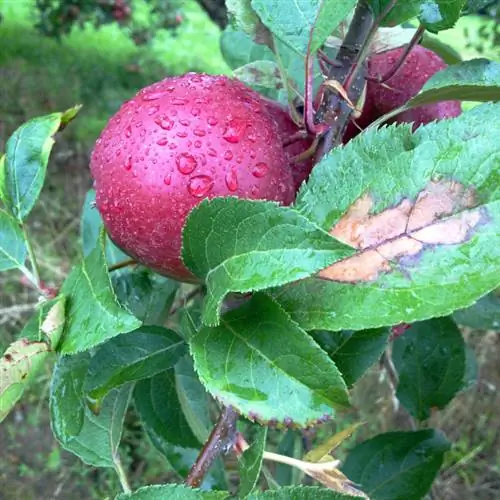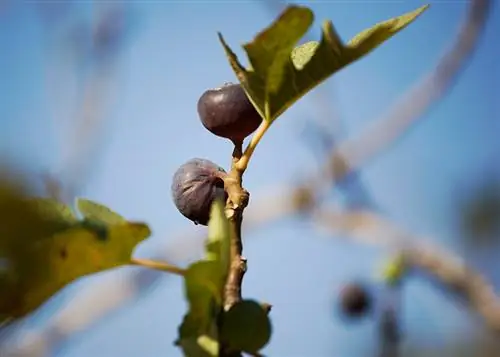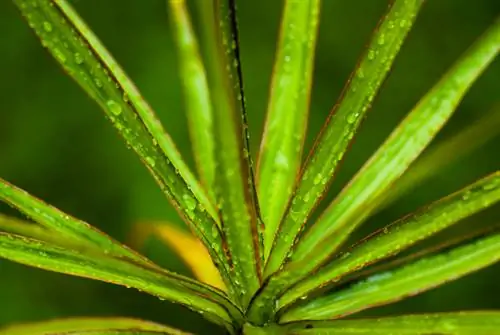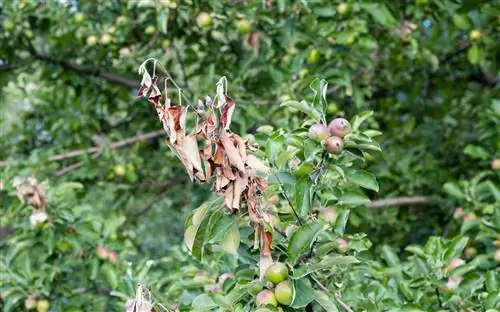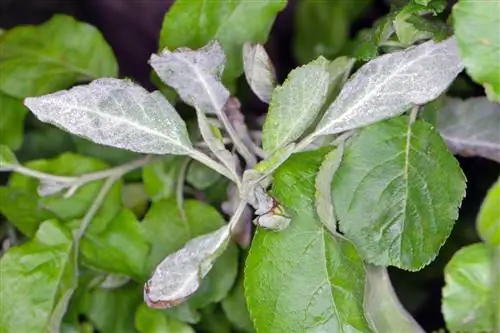- Author admin [email protected].
- Public 2023-12-16 16:46.
- Last modified 2025-01-23 11:19.
Brown leaves in the middle of the green crown of an apple tree can sometimes just be a sign of a broken branch. However, they are often also the first harbingers of an infection with apple scab, which is one of the most serious apple diseases.
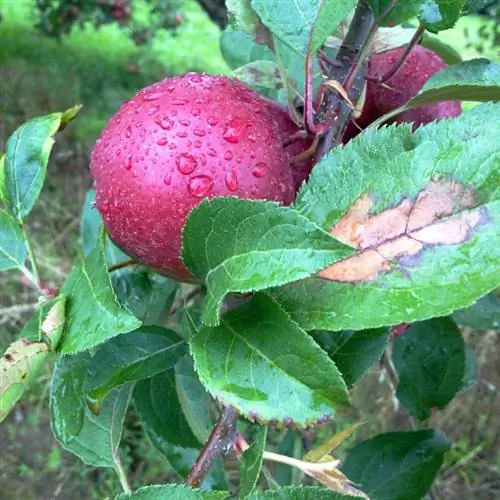
Why does my apple tree have brown leaves?
Brown leaves on the apple tree can indicate an apple scab infection, which manifests itself as mottled browning of the leaves and jagged, dark spots on the apples. Preventive measures include clear, permeable tree pruning and the use of scab-resistant varieties such as Kaiser Wilhelm or Boskoop.
Determination of apple scab on the damaged area
In order to isolate the problem and determine possible countermeasures, the apple scab must first be clearly identified as such. Since apple scab overwinters as a fungal network on the leaves, it can initially be recognized as a patchy brown color on the leaves. The spots are still rather small immediately after sprouting, but then quickly enlarge. Jagged, dark spots with cracks in the middle also appear on the apples. If the disease only occurs immediately before harvest, the fruits in storage can shrink and become stained.
Prevention and countermeasures
If apple scab has been diagnosed for the first time, it is usually not easy to get it completely out of your own garden. Chemical treatment usually makes little sense in a private garden, as it would have to be carried out very specifically by a biologist. However, various preventative measures can limit the damage and its spread. Treetops should always be light and permeable, as this deprives the fungus of vital moisture on the leaves.
The long-term fight against the problem
Frequent pruning of the apple tree not only increases the dryness on the leaves, but usually also the vitality of the apple tree. which can thus better defend itself against fungal infestation. In the case of old apple trees, it should also be considered whether they should generally be replaced with scab-resistant varieties. These varieties include, for example:
- Kaiser Wilhelm
- Jakob Fischer
- Boskoop
- Ontario
- Rewena
- Florina
It may also make sense to give the trunk of your apple tree a new and scab-resistant crown by grafting branches of these varieties.
Tips & Tricks
If your garden is surrounded by hedges, you should also plant hardy apple varieties as half-stem or standard trees. This means that the treetops are above the lee of the hedge and can dry out better after rainy seasons.

